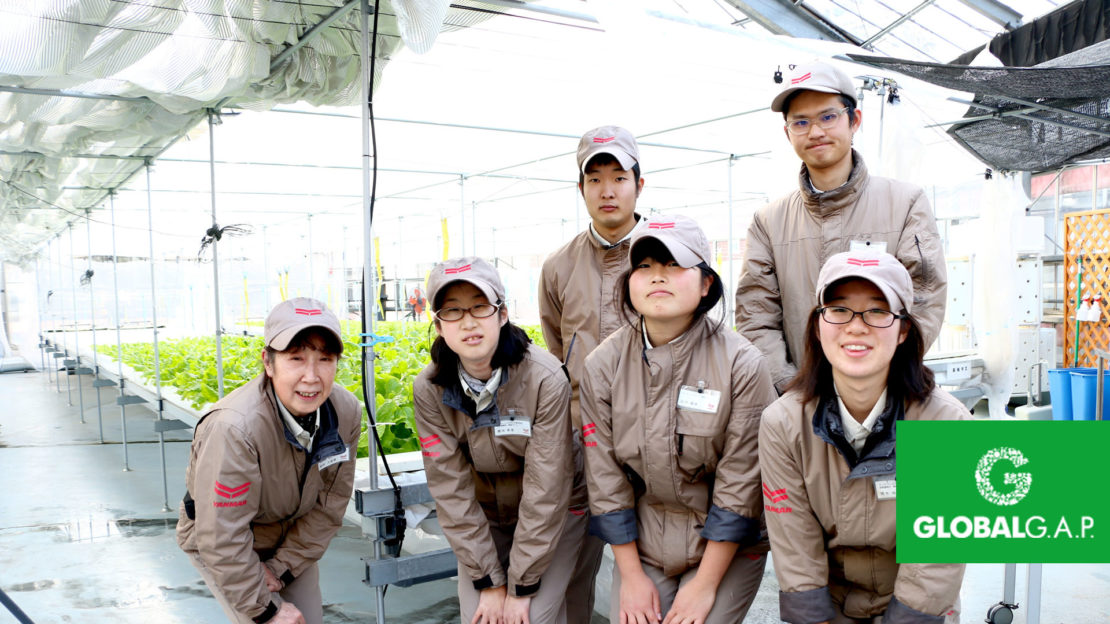Food suppliers for the 2020 Olympics and Paralympics in Tokyo must acquire GlobalG.A.P. certification, and Yanmar Green Farm in Ritto, Shiga prefecture has done just that for its hydroponically grown lettuce. We looked at the Good Agricultural Practices (G.A.P.) program in our last issue, and explained some of the advantages of certification, like better quality and management practices. This issue examines the road taken by the farm on its way to certification, and explores some of the background. The following comes from a discussion with Yasuyuki Ishiki, director of Yanmar Symbiosis, some of his staff (Takashi Kimura, Kurumi Nishimura and Shoko Aoki), and Arisa Iguchi of Yanmar Agri Innovation.
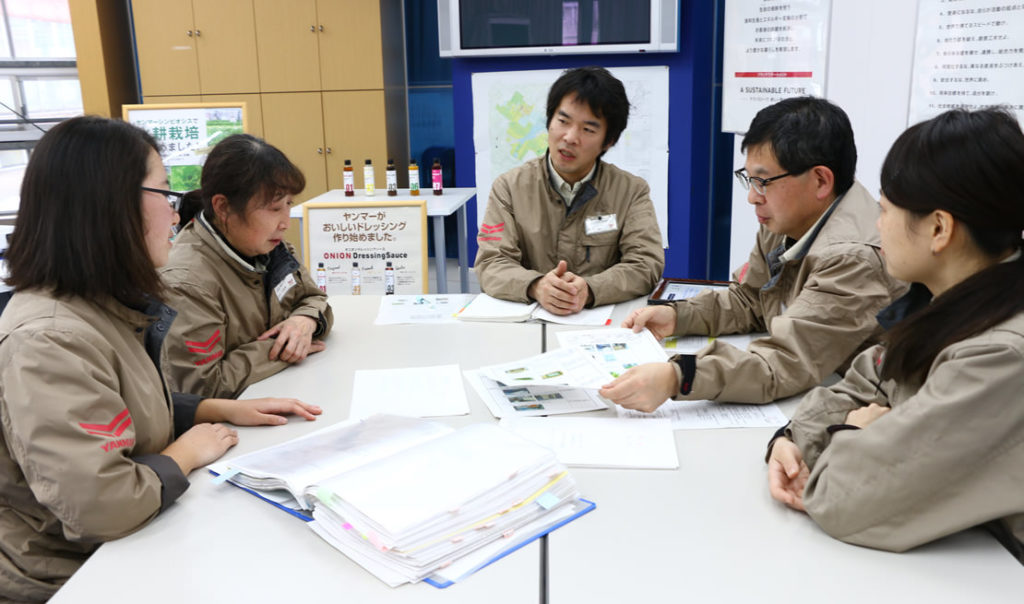
Why Did Yanmar Symbiosis Set Out to Obtain GLOBALG.A.P. Certification?
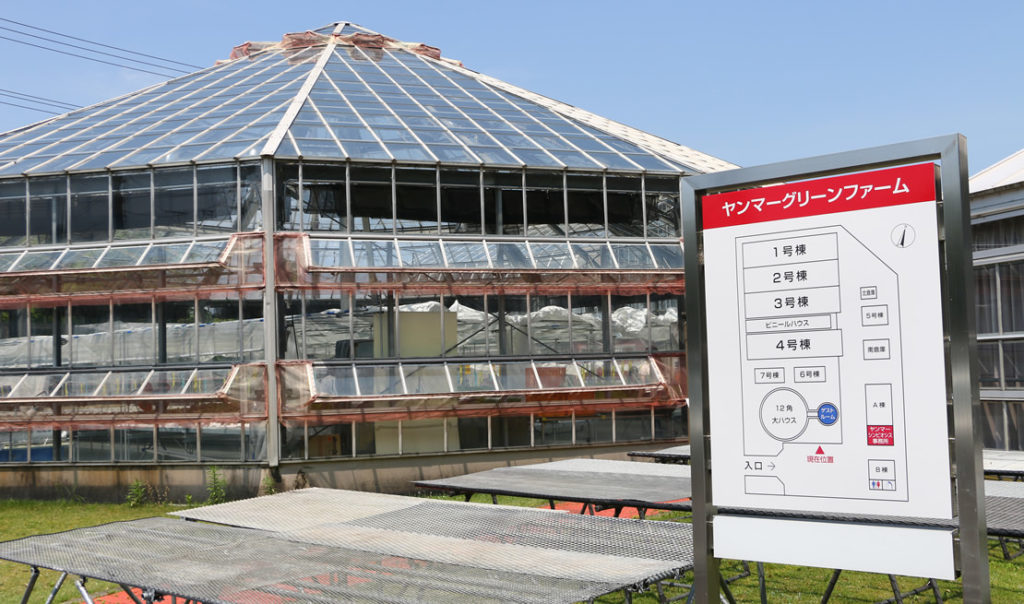
Ishiki: We’ve been growing produce like hydroponic lettuce, onions and blueberries at the Yanmar Symbiosis Shiga Ritto Center, and cultivating flowers as well. The venture was launched as an agricultural facility where people with different skills could work on projects in safety and security, and it turned out this goal was a fairly close fit with the Good Agricultural Practices (G.A.P.) program. Later, we learned from Ms. Iguchi that the 2020 Tokyo Olympics would embrace GLOBALG.A.P. standards for food supplies, and we thought this was a good opportunity to get on board.
Iguchi: Yes, food for the 2020 Olympics will have to conform to G.A.P. standards, prompting suppliers in Japan to gear up for certification. Farmers were asking us about the movement, and at first – this was back in 2017 – none of our Group companies or departments knew much about it. Thus, Yanmar Symbiosis decided to get hands-on experience and learn about the process.
Ishiki: To be frank, being certified under global standards doesn’t give us a price advantage for our lettuce. But, we felt that if we knew our lettuce met G.A.P. standards, that would motivate us to “do it right,” with things like maintaining sanitary practices and keeping our equipment organized. And by doing that, we had a good idea we’d be able to boost productivity.
Six Months from Green Light to Third-party Screening
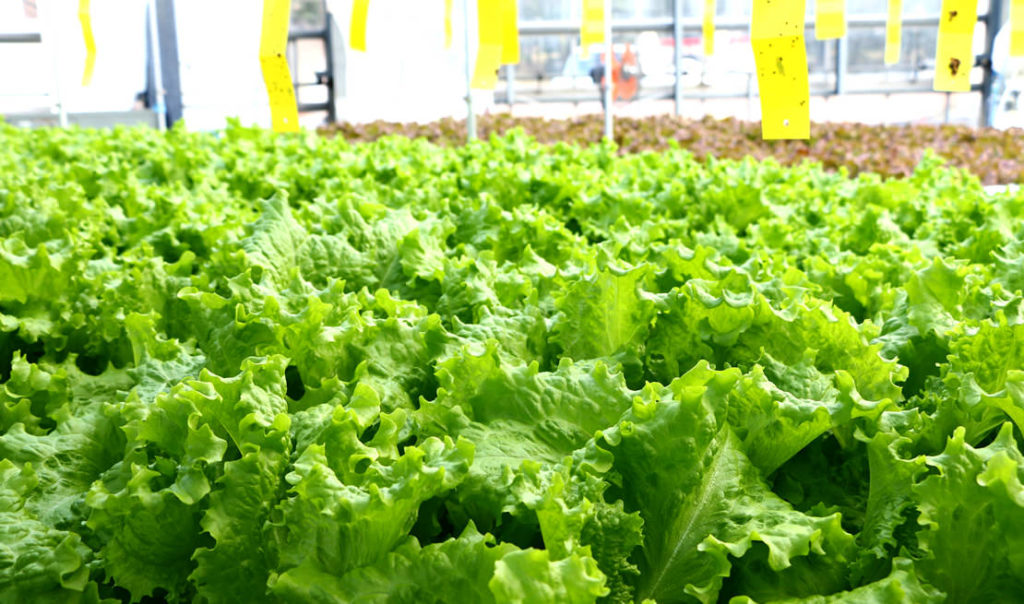
Certification requires deskwork and documentation, plus of course everyday farming. Many people would hesitate, doubtful they have what it takes. Yet Yanmar Symbiosis did almost all of the preparations on its own. Tell us about it.
Iguchi: We decided to go forward in October 2017, and in December we held G.A.P. study sessions with hydroponics personnel. Our brainstorming came up with a list of risks threatening occupational health and safety, food safety, and environmental conservation; all possible issues at our various workplaces. Then we drew up risk assessment sheets. This comprised our first step in the process.
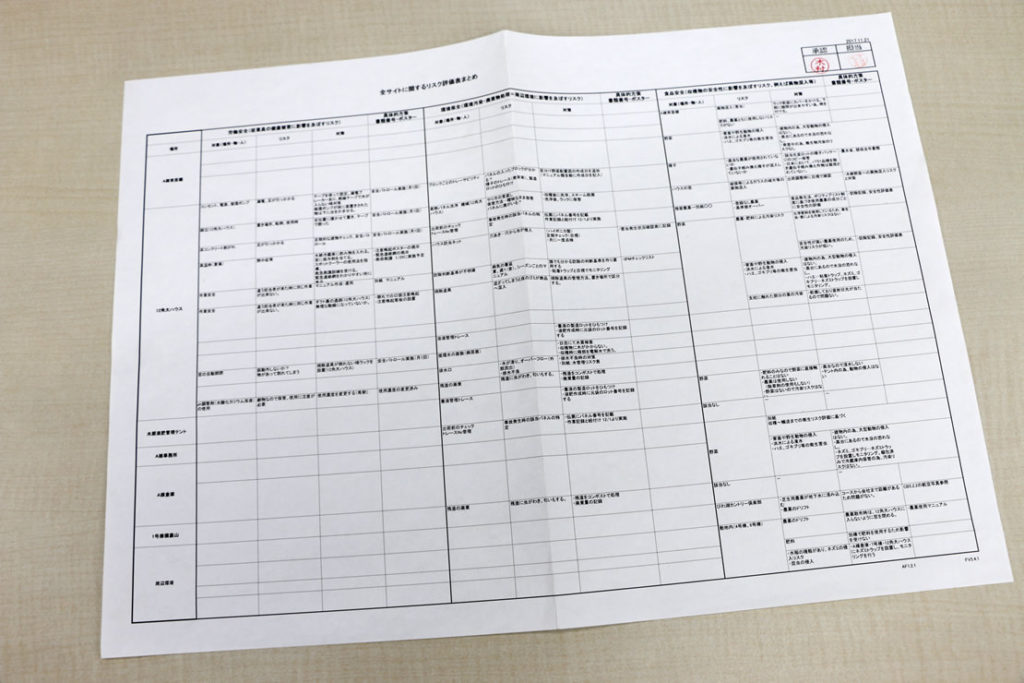
Risk assessment sheets drawn up by members of the brainstorming session. They list areas of concern, risks, countermeasures and action plans (complete with documentation numbers and posters), with the aim of ensuring occupational health and safety, food safety, and environmental conservation.
Iguchi: Our next step was to examine the risks listed on the assessment sheets and determine ways to avoid or resolve those risks. Each member was assigned responsibility to develop checklists and rules for their own area of expertise, keeping GLOBALG.A.P. screening standards in mind. From this came our first manual for the work sites, which we used to see if we could follow it effectively. Whenever we saw that some part wasn’t practical, we made changes, and about six months later, in March 2018, we were screened by a third-party certifying organization.
Ishiki: When drawing up the manual, we would document requirements for each task. For example, when applying this pesticide, are masks and protective clothing required or not? Whenever we found a risk that wasn’t covered by a strict rule in the manual, personnel collaborated to write it and implement it. This is another requirement of the G.A.P. program.
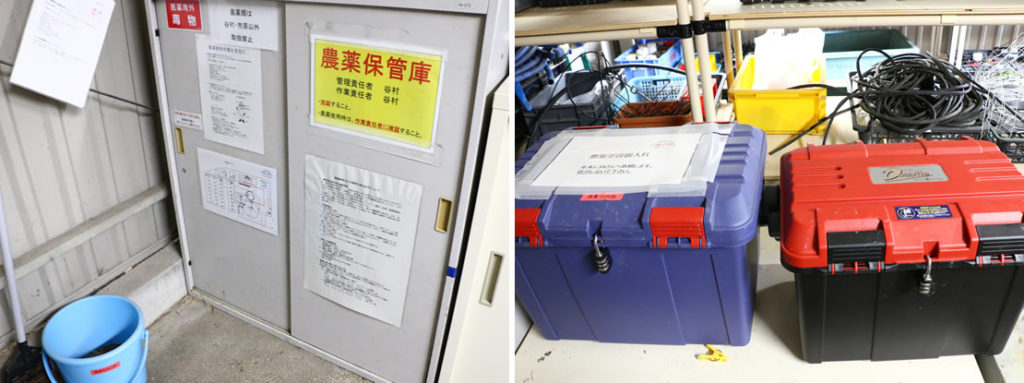
Kimura: Farm work generally doesn’t involve much documentation, so creating a manual was a big step for us. Actually, we did have manuals for some individual farm tasks, but nothing that covered the overall operation. Drawing up risk assessment sheets gave us a comprehensive understanding of our work.
Trial and Error Helped Produce a Manual That Has a Personal Touch.
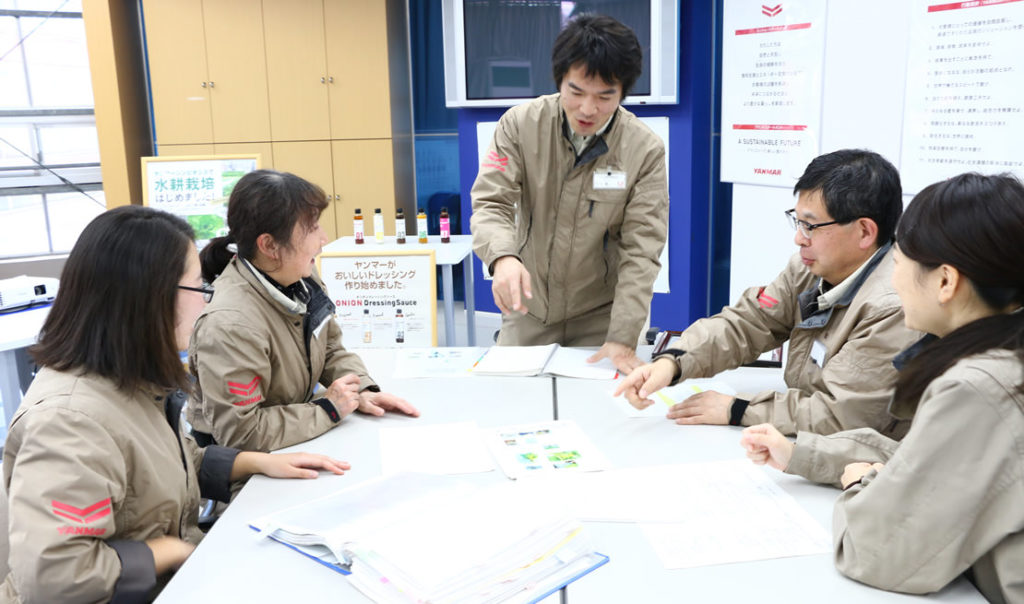
People generally don’t associate farm work with a manual. Most farmers depend on years of experience and intuition, and information in their head. On a family farm, knowledge and techniques are passed down from generation to generation. But when an entity like Yanmar Symbiosis establishes and follows a manual, even when there is a changeover in workers, the produce maintains its high safety standards and quality.
Ishiki: Two of the questions asked during the screening process were, “Are you keeping a tight control over agricultural chemicals?” and “Are you monitoring pests?” The nuance behind such questions is not whether we are following legal requirements, but rather, do we have rules and a manual for pesticide control, and is everyone following them? This demonstrates one important element in the G.A.P. program.
Kimura: Communication among members is also key, and we keep a record of our discussions.
Nishimura: In the beginning we had a hard time drawing up a manual because there wasn’t one that we could use as a guide. And, once we had it and were using it, we’d notice some detail that needed to be added. Then we’d discuss it and make improvements. As an example, the early version was quite wordy, so to make things easier to understand we made it a lot briefer and added more photos.
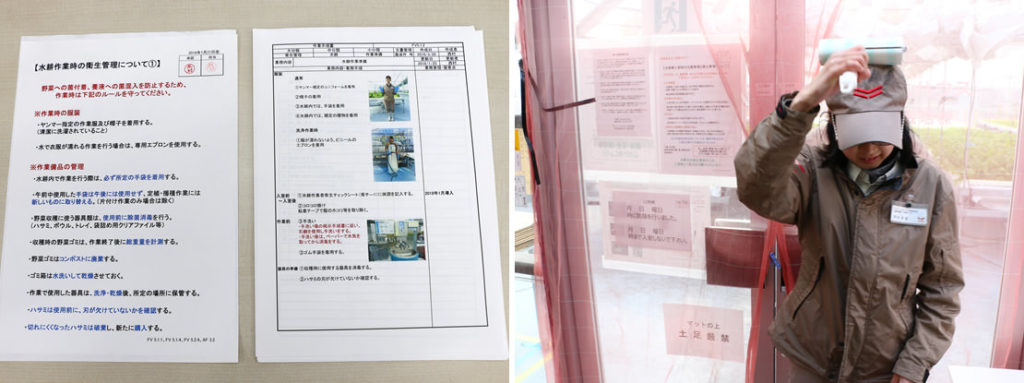
Right: This worker is removing dust from their uniform with a tape roller before entering the growing room, in accordance with the manual.
…our rules are solid, made with our needs in mind.
Nishimura: If you compare our manual with a G.A.P. manual template, you’d probably say some parts of ours don’t look professional. But our rules are solid, made with our needs in mind. There’s a real feeling of accomplishment.
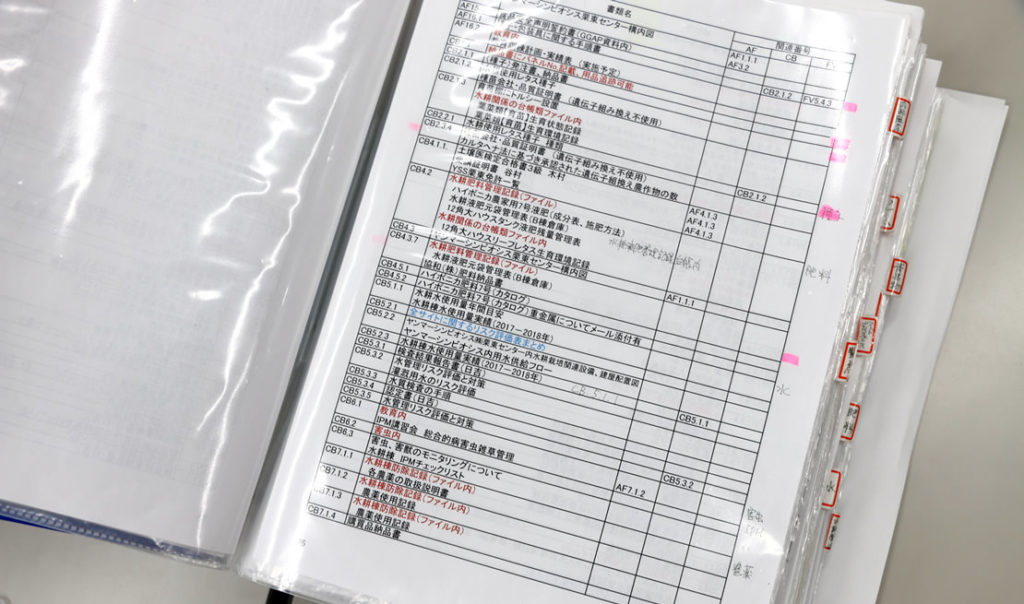
Ishiki: The documentation in the file may seem at first glance to be arranged higgledy-piggledy, maybe a bit like a scrapbook. If we’d followed the template religiously, our manual would have been impressive to look at, but because we developed ours one step at a time we identify with it. A manual made according to protocol tends to remain on the shelf.
G.A.P. Certification Leads to Agricultural Practices Friendly to People and the Environment
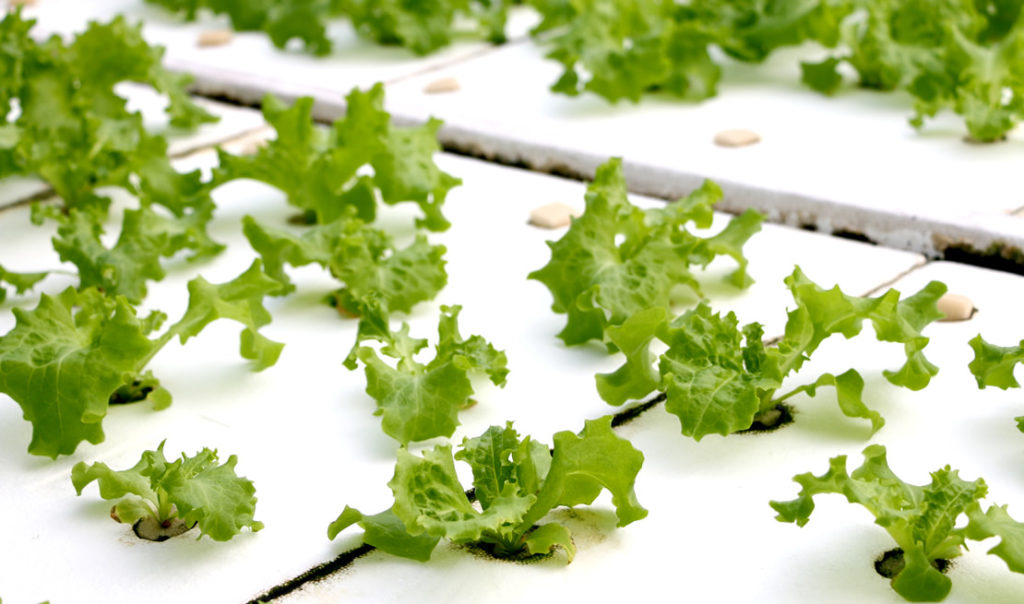
Copies of the Yanmar Symbiosis manual were distributed to all key locations on the farm. Next came a trial period, examining which parts might not be workable. This led to one update after another. What are the advantages of having such a manual on the farm?
Ishiki: One often hears, not only in farming but in other sectors as well, vague guidelines with words like “somehow, quickly, appropriately, nicely…” But hazy instructions are not a basis for accurate decisions, and interpretations may vary. When step-by-step procedures are described, responsibilities assigned, pictures and samples added, with quantifiable directions given (such as XX cm, XX times/day), things become clear, with no risk of misunderstanding.
Aoki: When there’s a manual, it’s clear what everyone has to do, and the job gets done right. Take, for example, color-differentiated tape. It can be used to show where a tool belongs when not in use, making it easy to keep things in order.

Right: Color-differentiated tapes show where tools should go.

Right: Planters are identified by color too, making it easy to see how many of each type remain.
Kimura: Since we’ve introduced G.A.P. principles the quality of our lettuce for market has improved. Before, when we aimed for size, leaves would crowd out their neighbors, raising the risk of disease. So we included these instructions in our manual: increase the distance between panels, and harvest before the leaves extend too far. Quality is better, loss is down, deliveries are up. The G.A.P. process encouraged us right from the beginning to examine possible risks. Otherwise opportunities for improvement might not have eventuated.
Ishiki: The process has given us even greater motivation to grow vegetables that are high in quality and safe to eat, and to improve our work environment. Our workplaces are safer and more pleasant for everyone. It was a long struggle to obtain certification, but putting G.A.P. into practice has shown the advantages.
The Yanmar Green Farm will continue to farm the Good Agricultural Practices way.

 Agriculture
Agriculture
 Recreational Marine
Recreational Marine
 Recreational Boat
Recreational Boat
 Premium Cruiser
Premium Cruiser
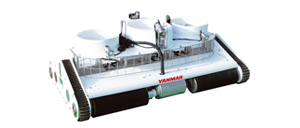 Marine Equipment
Marine Equipment
 Marine Commercial
Marine Commercial
 Propulsion Engines (High Speed)
Propulsion Engines (High Speed)
 Propulsion Engines (Medium Speed)
Propulsion Engines (Medium Speed)
 Auxiliary Engines
Auxiliary Engines
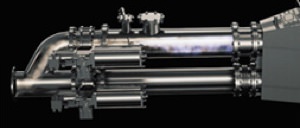 SCR System
SCR System
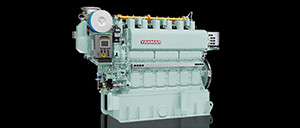 Dual Fuel Engine
Dual Fuel Engine
 Two-stage Turbocharging System
Two-stage Turbocharging System
 Electric Propulsion System
Electric Propulsion System
 Energy Systems
Energy Systems
 Construction
Construction
 Industrial Engine
Industrial Engine
 Large Generators
Large Generators
 Power Products
Power Products






















